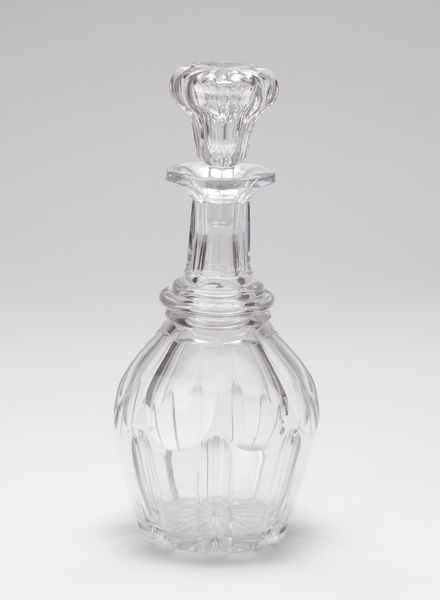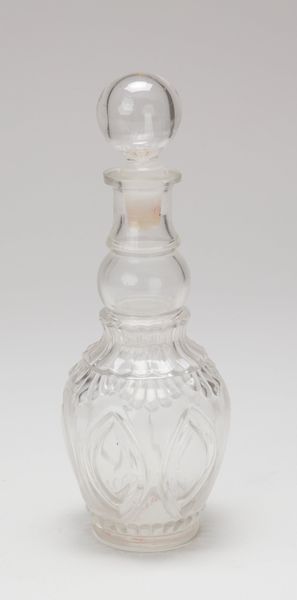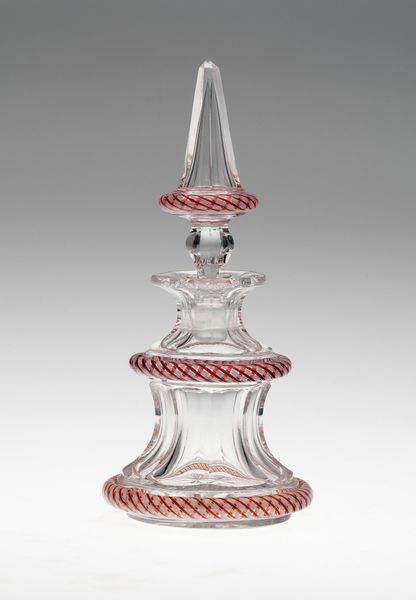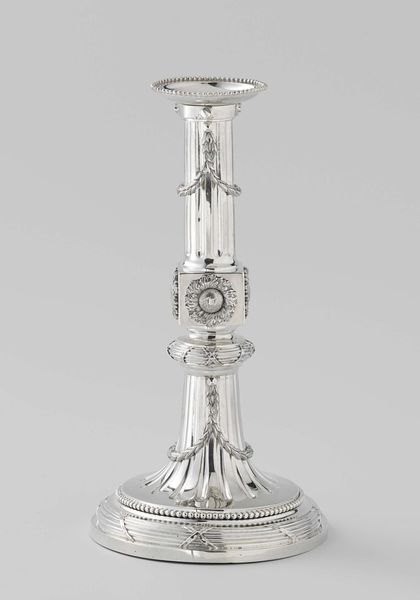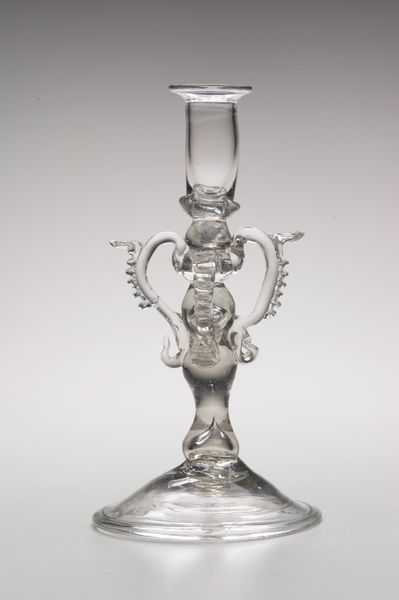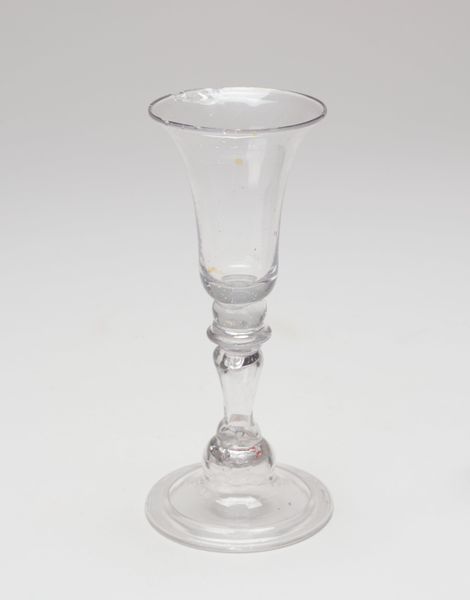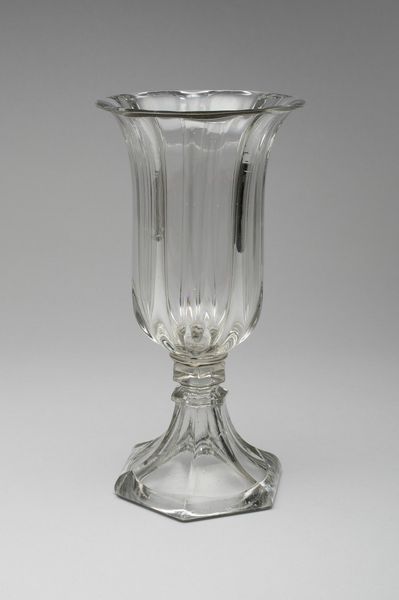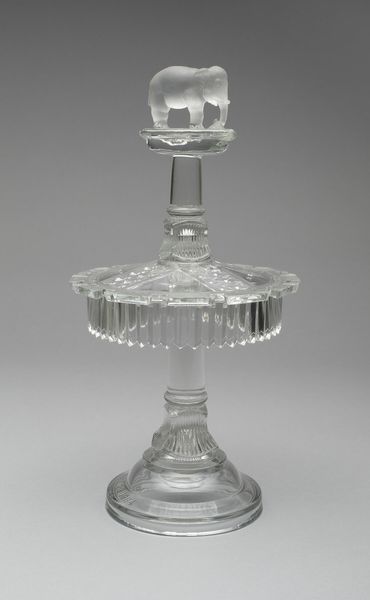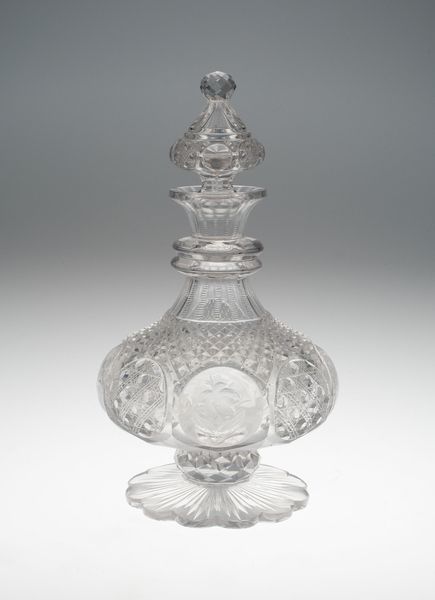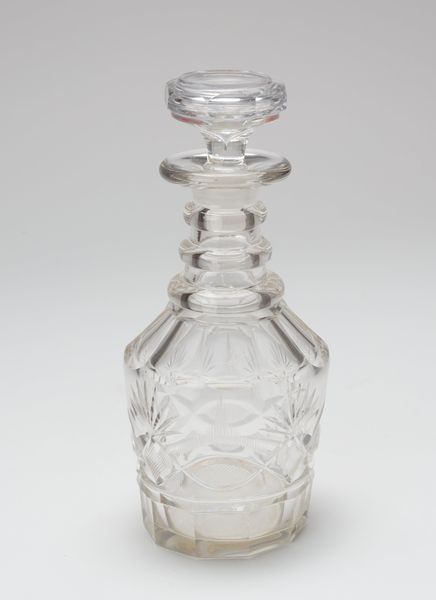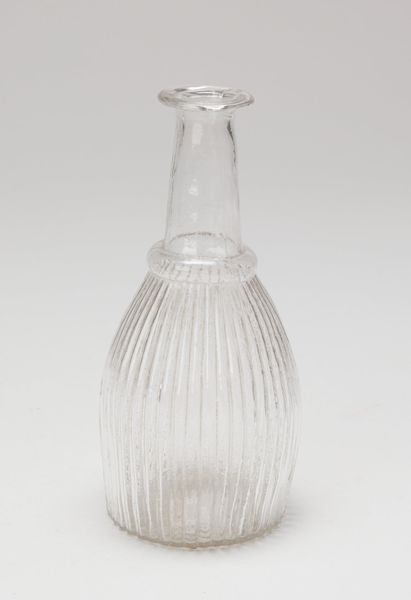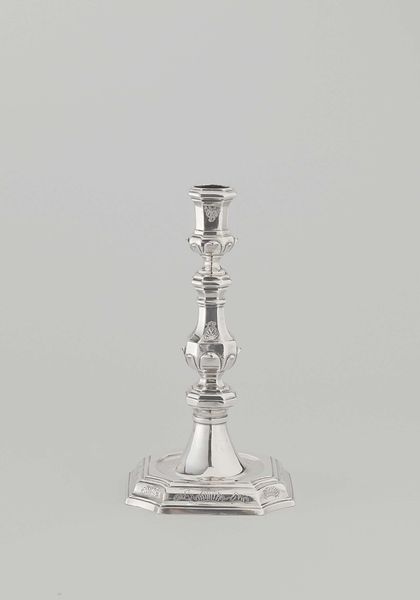
glass
#
glass
#
decorative-art
Dimensions: H.: 17.2 cm (6 3/4 in.)
Copyright: Public Domain
Editor: So this is a glass candlestick made by the Boston and Sandwich Glass Company sometime between 1850 and 1870. It’s… surprisingly whimsical, with those playful dolphin supports. What strikes you when you look at it? Curator: The first thing I see is the industrial process behind it. This wasn’t unique artwork, right? It was designed to be reproduced through pressing, a method that democratized access to luxury items like fine glassware during that era. What do the mold lines and slight imperfections tell you about its production? Editor: Well, they suggest mass production, definitely. It makes you wonder about the glassworkers themselves – their skill versus the machine’s capabilities. Was there a tension between craft and industrialization? Curator: Absolutely. While the design aspires to elegance, the standardized production allowed the company to reach a much broader consumer base, catering to the rising middle class's desire for refined domestic goods. How does its materiality—the relative clarity and purity of the glass—play into these socioeconomic aspects? Editor: It gives the impression of luxury but at an accessible price, perhaps. The form too, it looks like more elaborate hand-blown pieces. I guess, what appears to be an innocent design carries implications about labor and consumption in 19th-century America. Curator: Precisely. Even a seemingly simple object reveals shifts in production and consumption and, therefore, material culture. It’s a testament to glass pressing's ability to blend aesthetic ambition with the realities of mass manufacturing. Editor: This candlestick seems much more complex now than it did just a minute ago. Seeing beyond its function or aesthetic is really intriguing. Curator: Material history can illuminate so much about societal shifts that are woven into everyday objects.
Comments
No comments
Be the first to comment and join the conversation on the ultimate creative platform.
